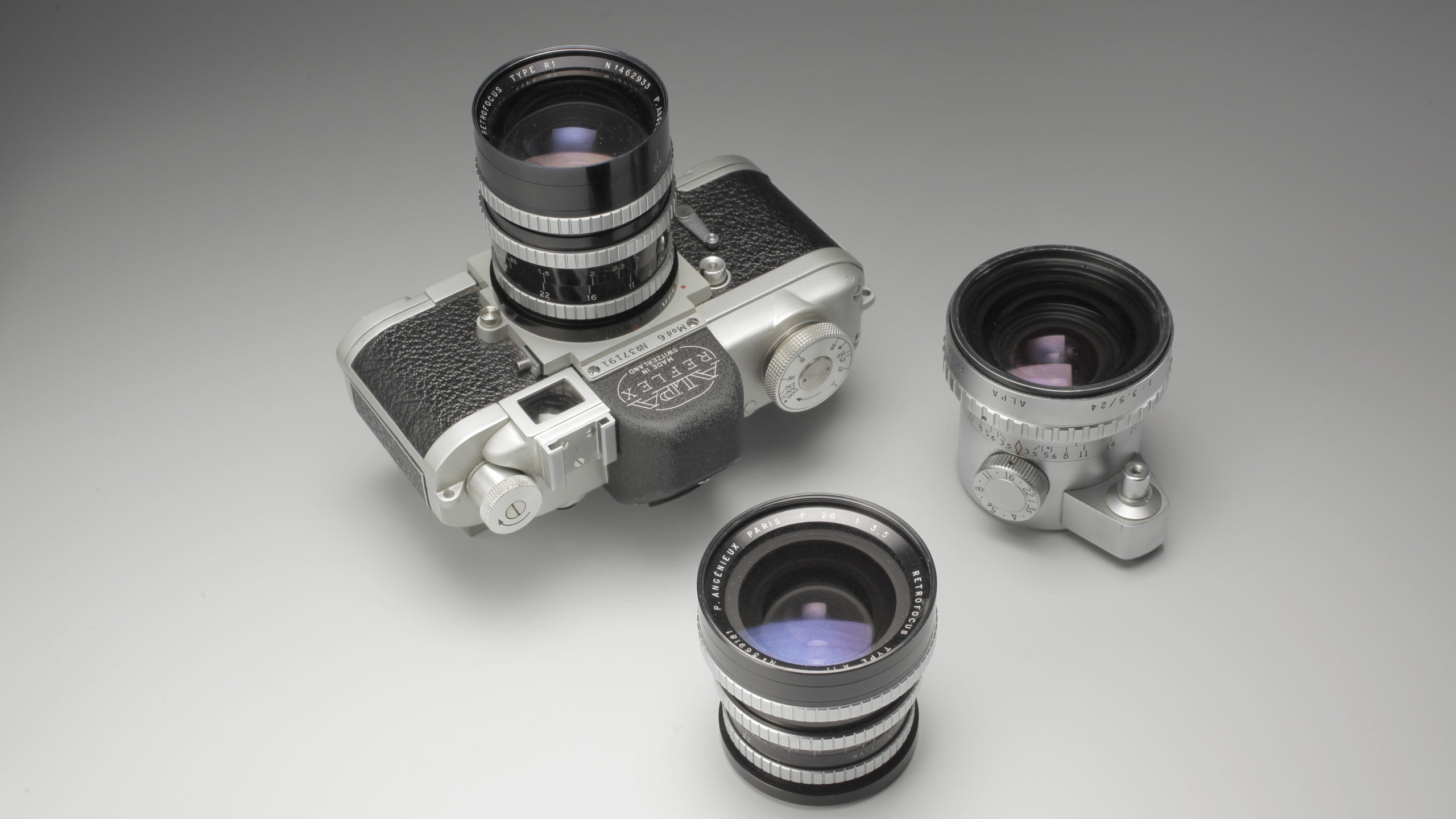Retrofocus and zoom
French optician Pierre Angénieux brought about revolutionary advances in optics for photography, cinema and television: the wide-angle retrofocus in 1950, lenses with very wide aperture (f:0.95) from 1953, and the constant aperture zoom lens for cinema in 1956.
The image of a wide-angle lens forms so close to the last component, that there was not enough space left for the reflex viewfinder’s mirror! In order to solve this problem, in 1950 French optician Pierre Angénieux had the brilliant idea of designing a retrofocus lens which “pushed back” the image in optical terms, freeing up the space needed for the reflex mirror.
Pierre Angénieux (1907-1998) created the Etablissements Angénieux in 1935 in Paris, then settled in his birthplace of Saint-Héand in the Loire region. He produced high quality lenses for photography and cinema. He supplied major brands such as Alpa, which did not produce optics. Angénieux is now part of the Thales group.
The zoom or variable focus lens for cinema was invented by Roger Cuvillier, a French optical engineer working for the SOM-Berthiot, in 1949. In 1956 Angénieux designed a constant aperture zoom lens, using a very precise cam mechanism, which made greater focal variations possible. The first zoom for small format reflex cameras was the result of a joint effort by Voigtländer and Zoomar in New York, and first appeared on the Bessamatic in 1959.


